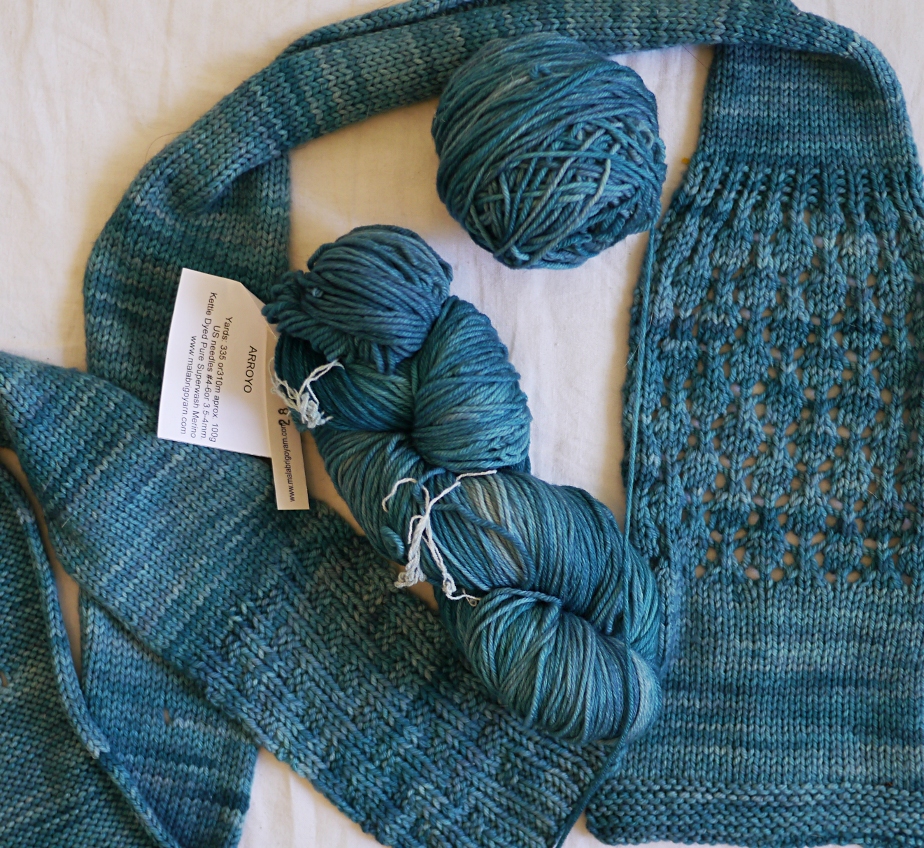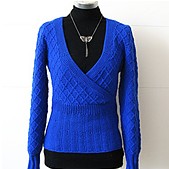-
Errata: Gacoco Baby Blanket
This errata has been moved to https://www.minimiknitdesign.com?page_id=321.
-
The Production of a Knitting Pattern – Part 3
This is a continuation on The Production of a Knitting Pattern — Part 1 and Part 2. The next thing to do is grading and writing the pattern, one of the longest process. I break the process into the following steps: 1. Derive sample measurements 2. Grading: derive measurements for all the sizes based on the sample measurements and my sizing chart. You can use any standard sizing chart. 3. Convert measurements into stitch and row counts based on the gauge. 4. Round the numbers in step 3 so that numbers in the pattern turn out nicely. 5. Write the pattern and derive the shaping steps (e.g. dec x sts…
-
Kimono Cardigan Sizes 80-112 cm / 31.5-44″ — € () or If you love knitting lace but find lace shawl hard to wear, you may love this loose fitting kimono style cardigan. It comes with lots of free flowing panels that show off the delicacy of lace. It can either be dressed up as an evening wrap or dressed down as a beach cover up. It can even be rolled up and thrown over the shoulder as a shawl. When used as a shawl, the side slits allow free movement of the arms. As a lace weight cardigan, it can easily be tucked in your purse. The stitch pattern is…
-
The Production of a Knitting Pattern – Part 2
This is a continuation on The Production of a Knitting Pattern — Part 1. After selecting a yarn and a pattern stitch, I begin to make a swatch. It is during this phase that the yarn begins to talk to me. Sometimes the yarn suggests me to use a different stitch pattern or change the garment shaping. It happened once that a yarn (Debbie Bliss Fez, no wonder that it is discontinued) pilled so badly that I had to drop the design. I only begin working on the pattern when I’m happy with how the yarn is working out for the design. Above is the actual swatch I made for…
-
Almost done
I’m almost done with my upcoming design, a lace cardigan. I’m knitting the last sleeve. As impatient as I am, I have already blocked the other pieces and sewn them together. I absolutely love how it looks. This period I have been slow with my knitting, with this hot weather, I find myself sewing more often than knitting. Anyway, I think that I can get everything done by the end of month and hopefully get the pattern tech edited by September.
-
The Production of a Knitting Pattern — Part 1
In this series I’m going to describe my design process of a cardigan. This series is not intended to be a tutorial and only serves to satisfy the curiosity of those that wonder what kind of works go behind the production of a knitting pattern. Most of my designs come from my sketch book, on which I record all the random ideas that come to mind. My sketches are just some rough pencil drawings. I’m mostly interested in recording the proportion of design elements. After a design that has been sat in my sketch book for weeks, if I still feel excited about it, I begin to look at stitch…
-
Free Pattern: Simple Mohair Scarf
Yarn Lace weight Shown here: Hamanaka Twin Gradation (72% Mohair, 28% Nylon; 150 m/164 yds, 25 g/0.88 oz ball): 2 balls Needles 4.5 mm (US 7) needles, any type Finished Measurements 206 cm x 16 cm / 81″ x 6.25″ Gauge is not critical Abbreviations k – knit p – purl sts – stitches YO – yarn over Directions Cast on 30 sts. Set-up row: Knit to end. Row 1: [K6, YO, ssk, p2, k2tog, YO] 2 times, k6. Row 2: Knit to end. Row 3: [K6, p1, YO, ssk, k2tog, YO, p1] 2 times, k6. Row 4: Knit to end. Repeat [Rows 1-4] until piece measures 206 cm /…
-
Trivial serger facts
I’ve just bought my first serger and made a pair of pants for DS. It’s a Juki MO 654 DE 2/3/4-thread serger. There are many reviews available for this model, so here I just want to add a review from a total newbie perspective. I’m good at sewing and can sew almost anything that comes to mind. Usually I drape my own patterns. The reason that I sew and design knitwear is that I love creating /exactly/ what I want. I’ve thought of buying a serger for years, but I sew so occasionally that I can’t justify the cost, and honestly, sergers look pretty complicated. After checking out most of…
-
Olimpia Pullover
Olimpia Pullover Sizes 76-112 cm / 30-44″ — € () or Olimpia is a wrap-over style pullover with set-in sleeves. The pattern sections are worked from the bottom-up to simplify shaping in pattern. The body ribbing section is worked from the top-down to for easy length adjustment. Worked in sport weight yarn it is a versatile lightweight garment comfortable to be wore indoor. As a plus, it works well as a nursing garment too. Both written and charted directions are given for the stitch pattern. Measurements are given in both cm and inches. MATERIALS YARN Sport weight Shown here: Fili & Fili Gaia (100% wool; 150 m/164 yds, 50 g/1.75…
-
Errata: Minimissimi Sweater Coat
This errata has been moved to https://www.minimiknitdesign.comerrata.html



